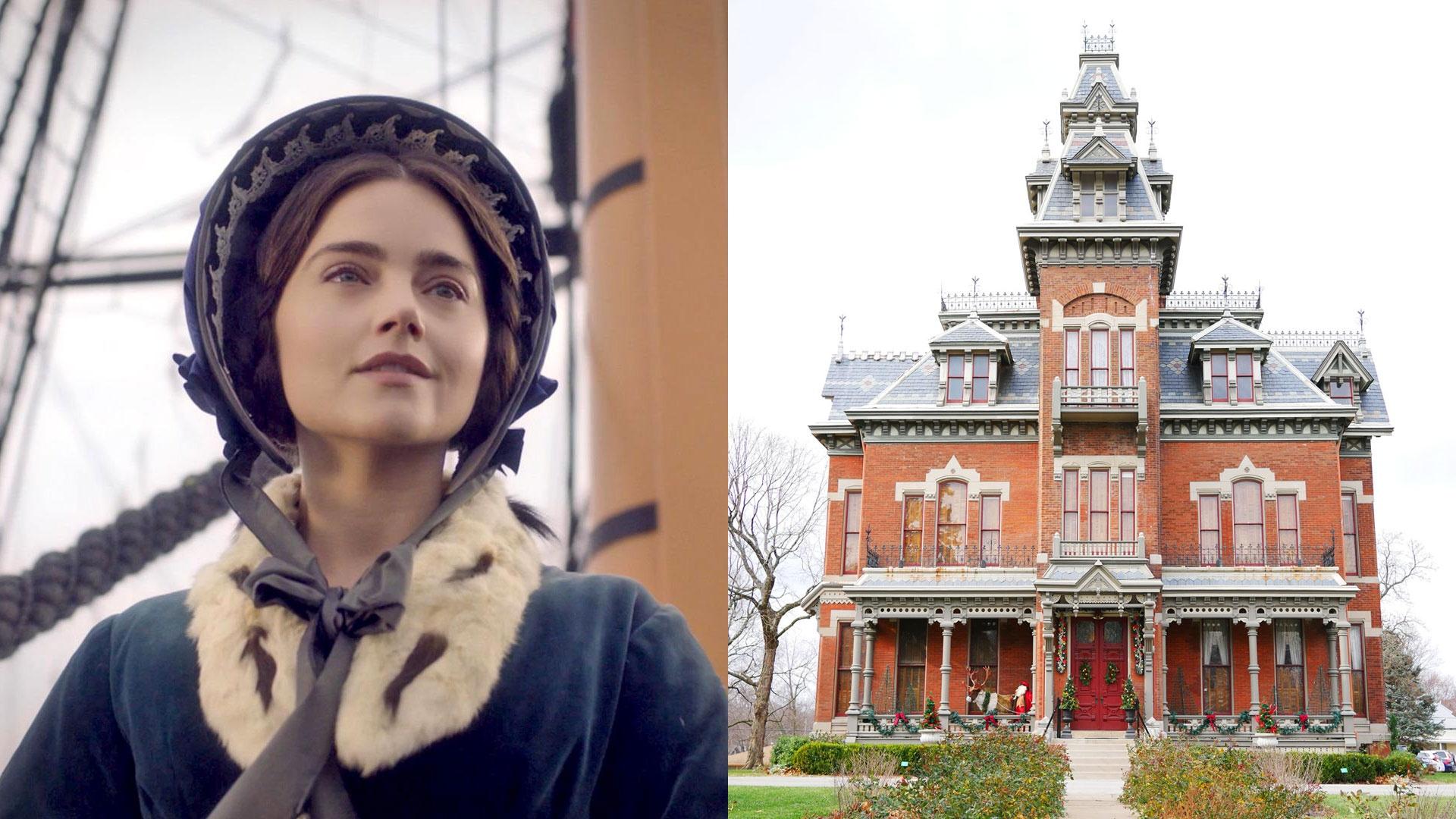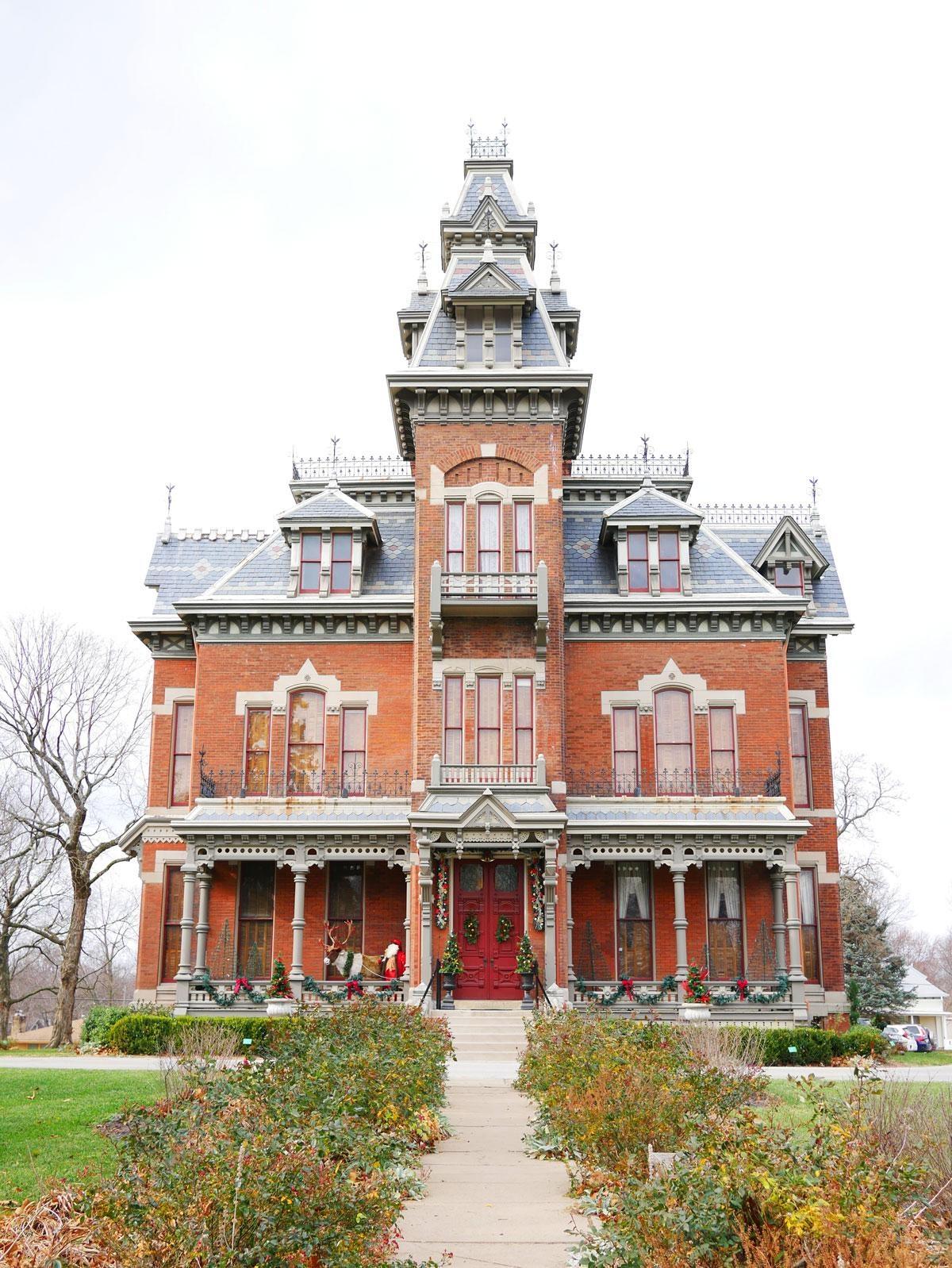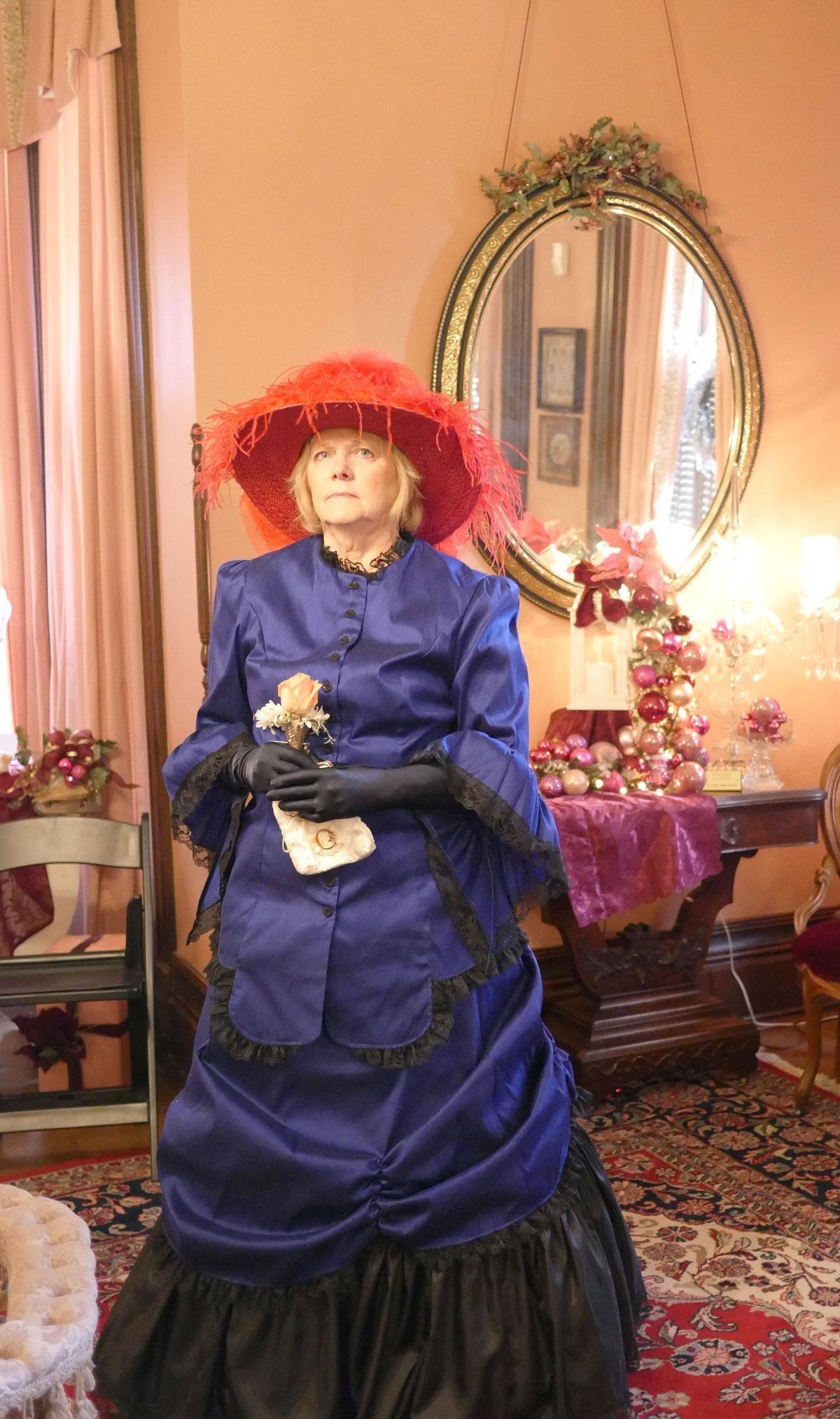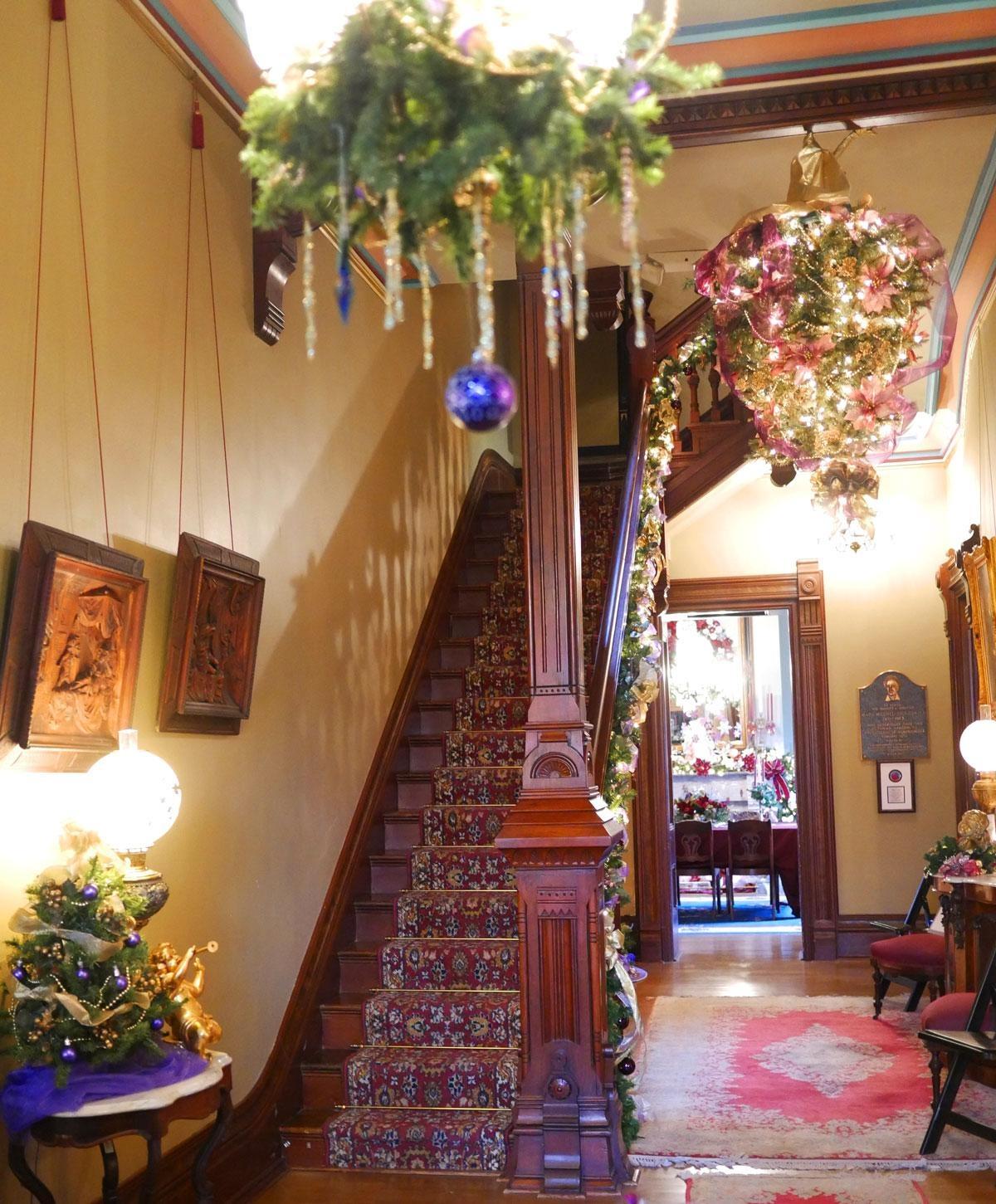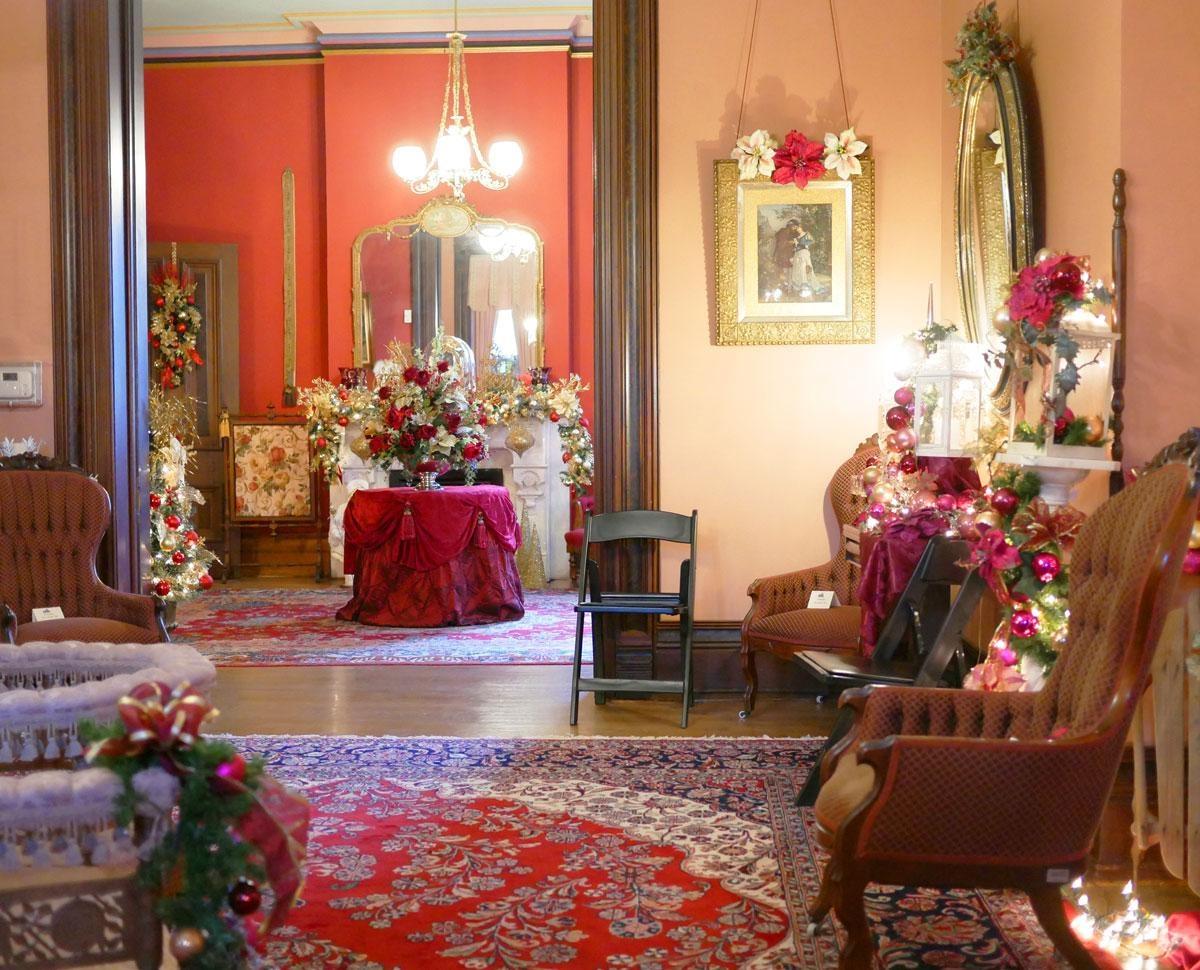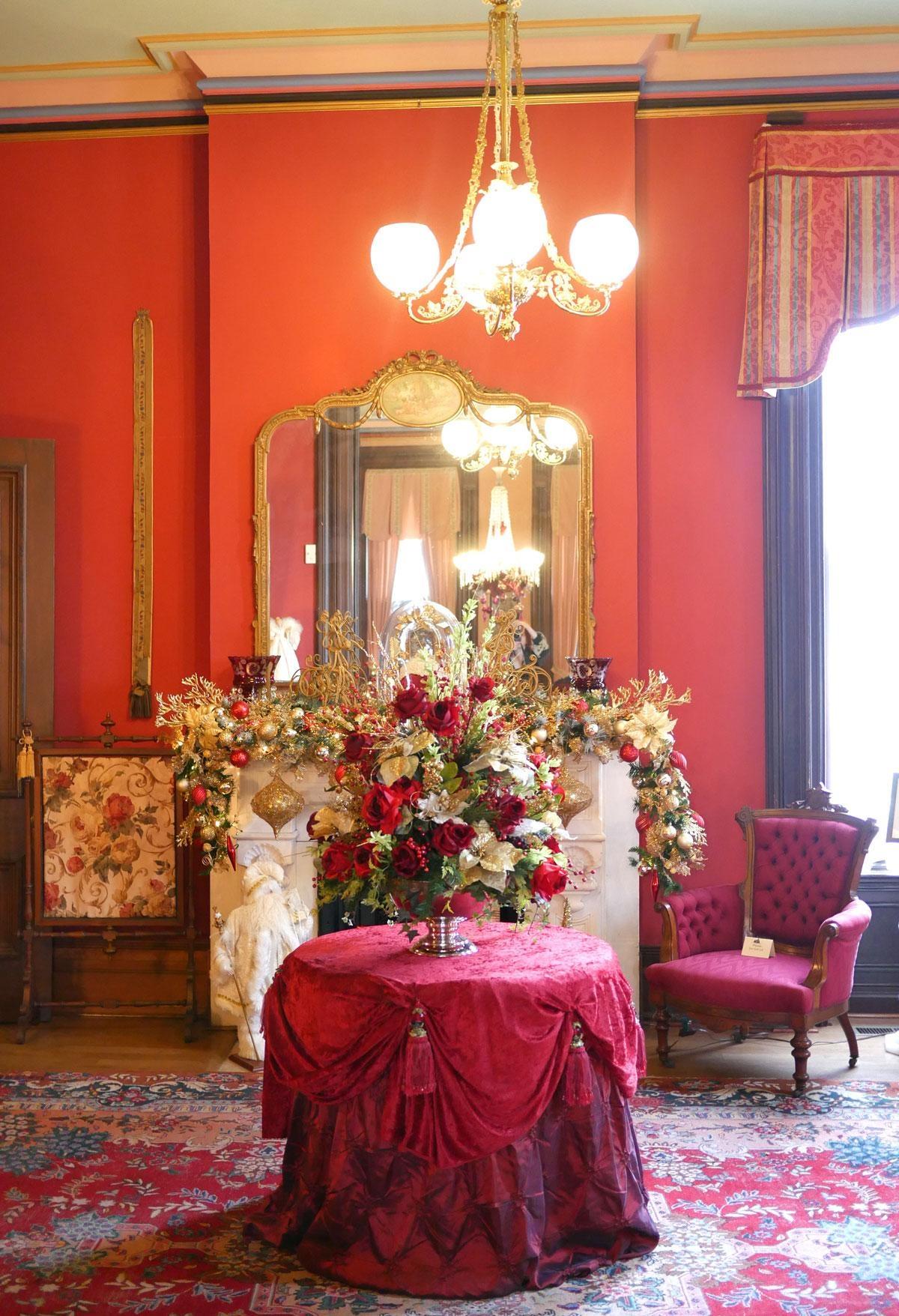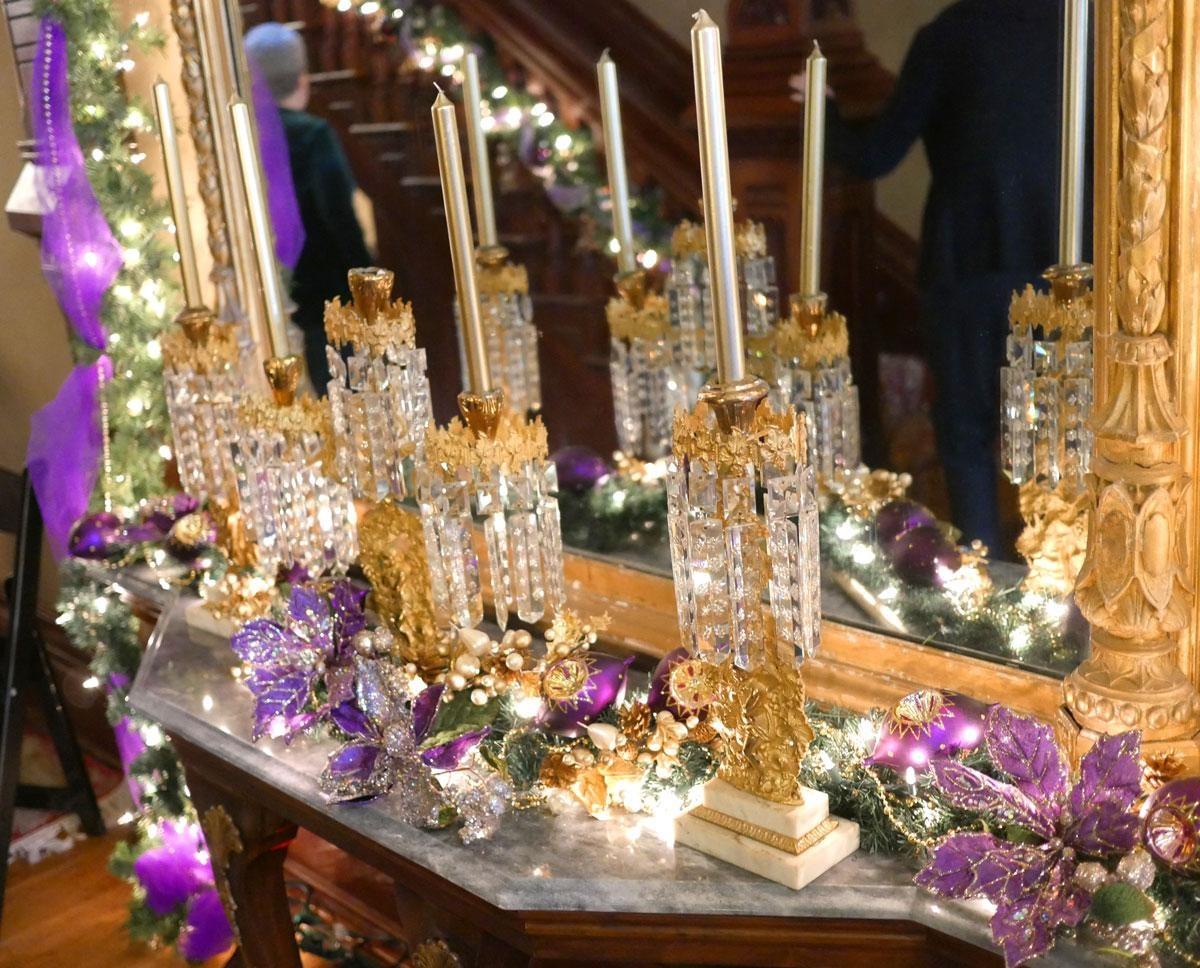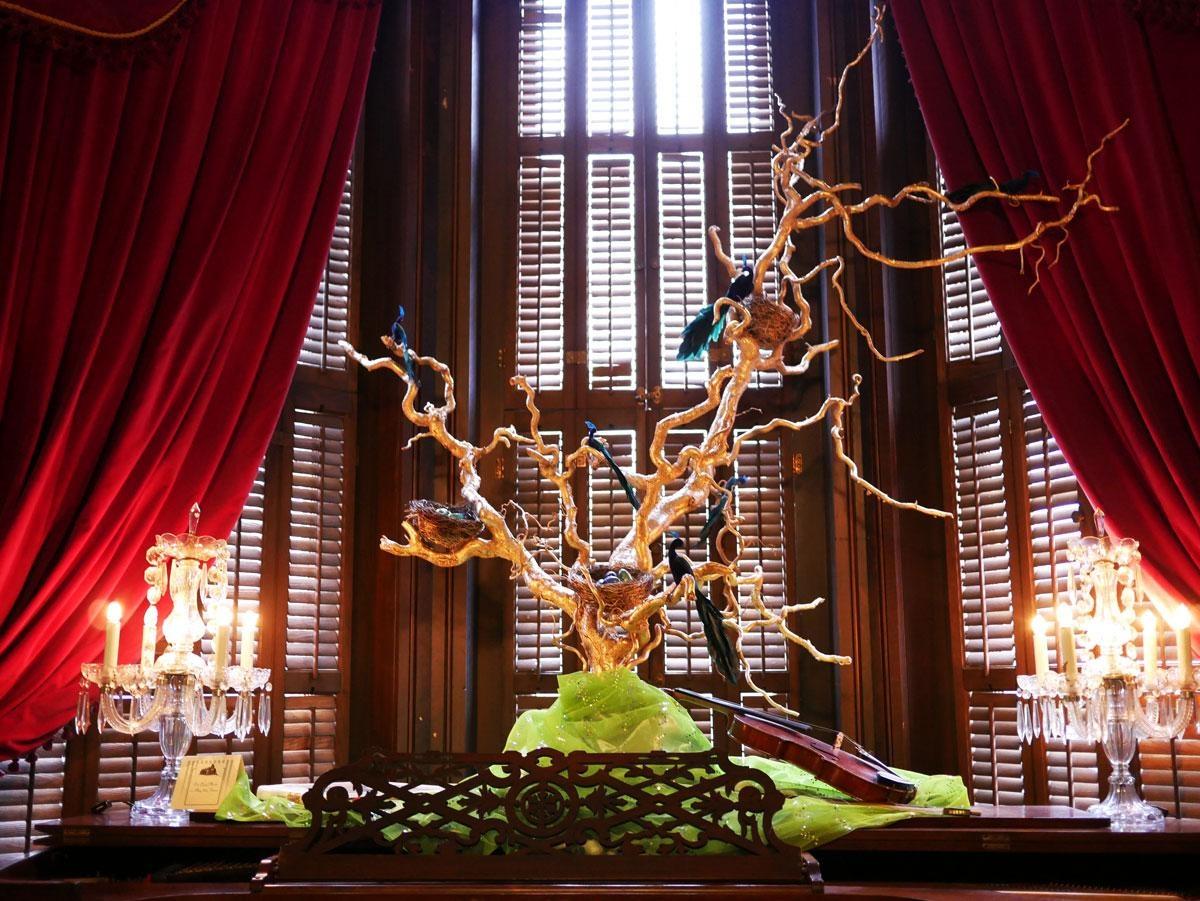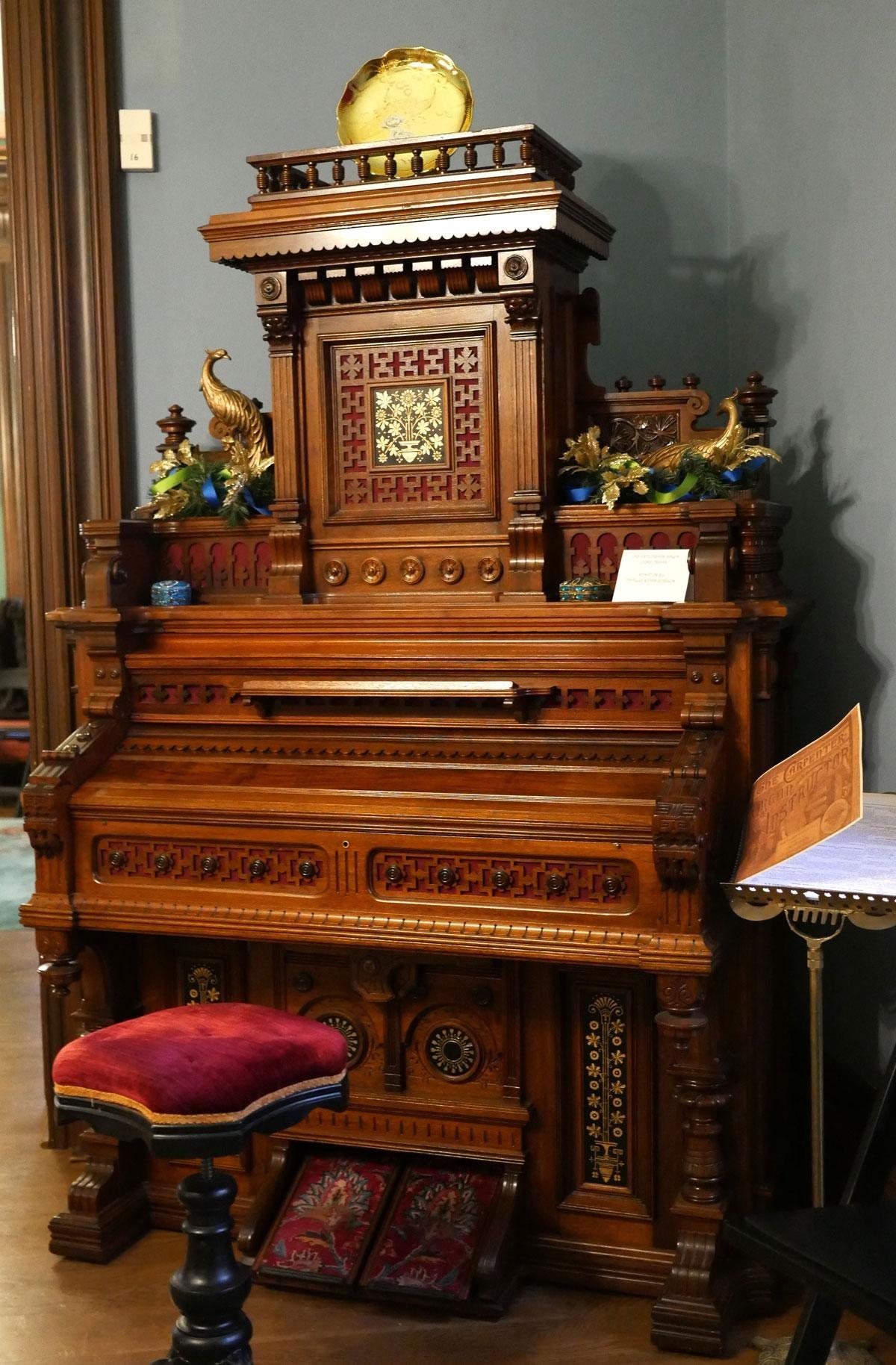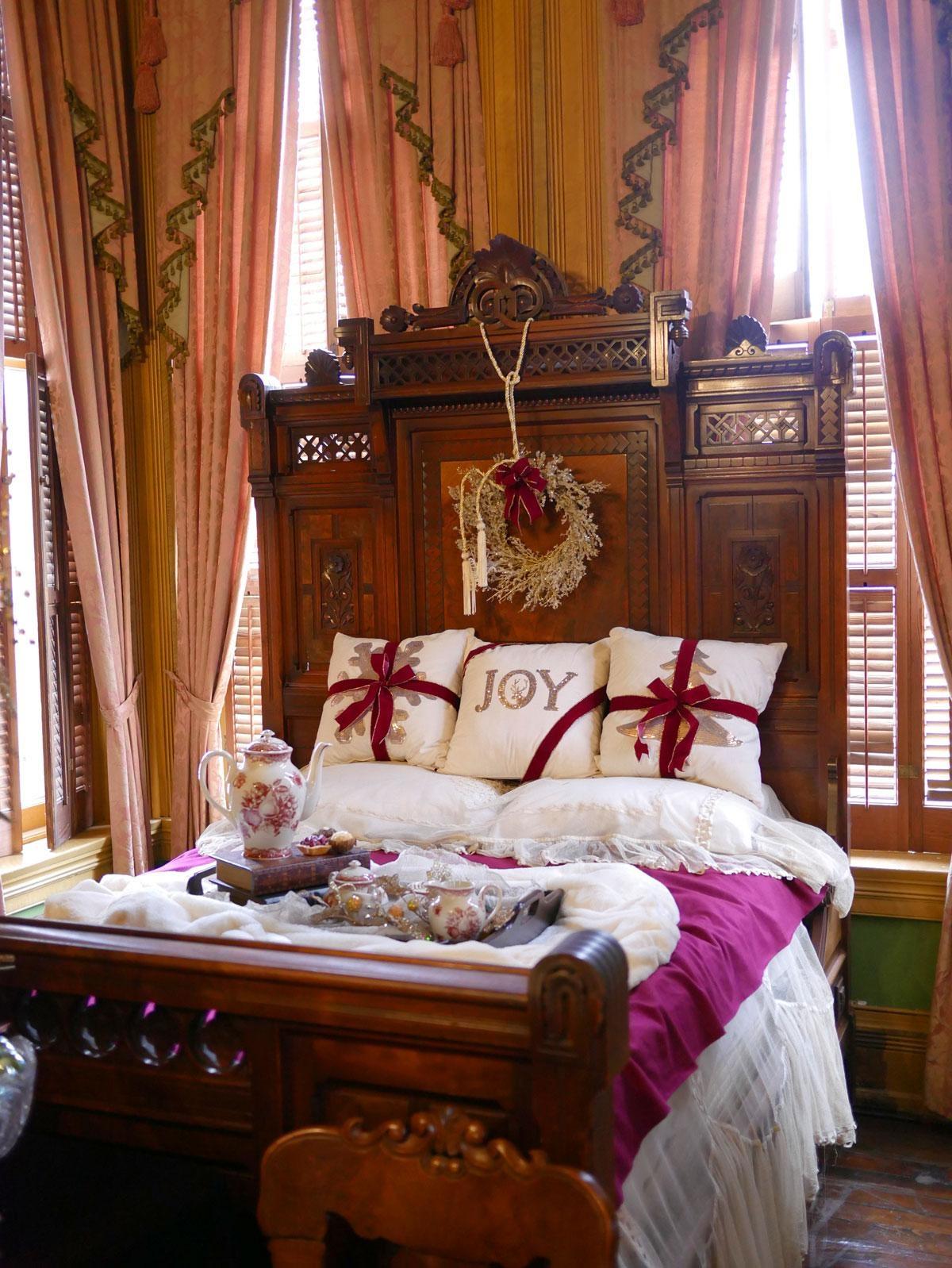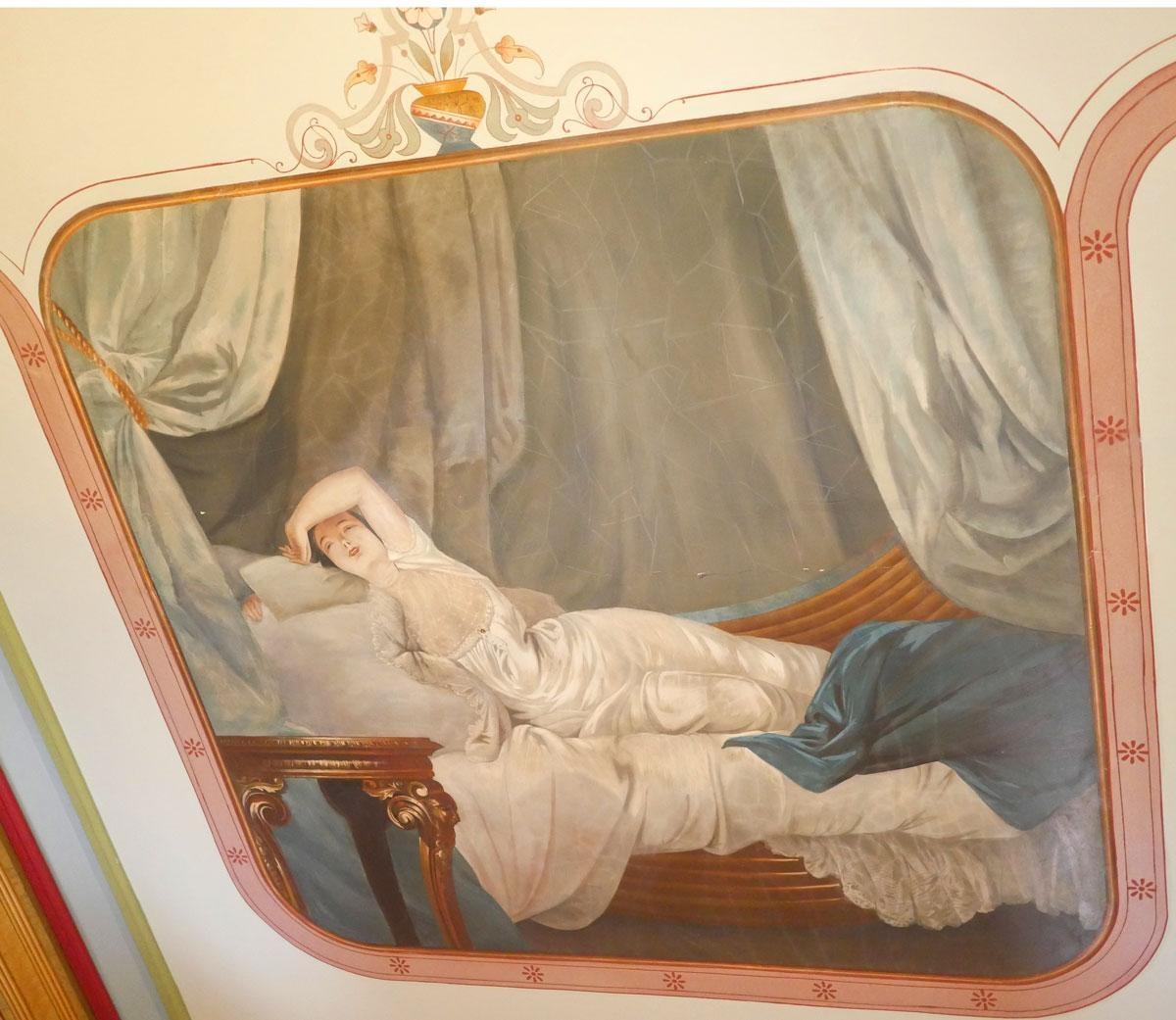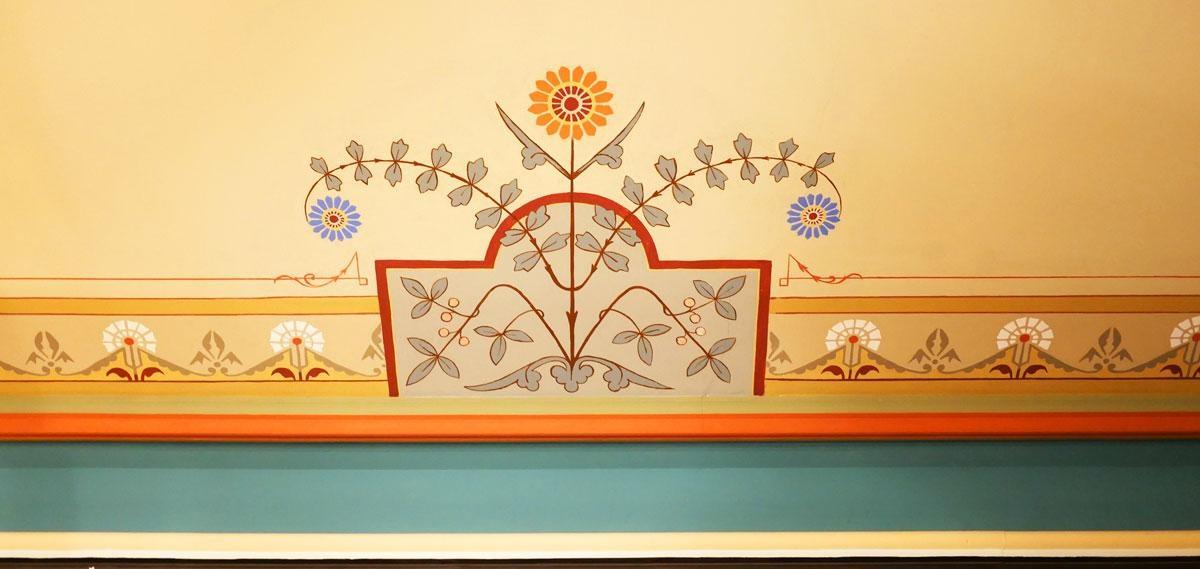They actually started the tussy mussy as a precursor to perfume. Back then, deodorant hadn’t been born, they didn’t take as many baths, they may not have smelled fresh all the time, so they would carry little bouquets like this, either in a nosegay, or if they were very fortunate to have a little tussy mussy. The Victorians, with all the clothing they had on, they just didn’t have the top layers, they had the slips, the camisoles, the corsets, the underpinnings, and you wouldn’t go anywhere without your gloves and being properly dressed. During the daytime, this is what the proper dress would be. It would be the long sleeves and the long collar at the top, because you didn’t want to show any type of ankle or leggings at all. But toward the evening, you could show your arms, and maybe a little decolletage, but that would be it. You would also have a particular type of jewelry for each event, and you would dress up for for that event, because if you were caught with the wrong type of jewelry or the wrong type of dress at the wrong time, you could be ostracized by high society.
And the ladies, in their huge costumes, could not stand too close to the fireplaces, because, if you backed up too close, you could not feel if the fire was hitting you. I’ve had that incident happen to me, when I was in costume for another event we had. I got too close to a coffee pot, and I could smell the coffee pot, but I didn’t think anything of it. Then I kind of reached around and felt — something feels a little drafty back there and a little wet. And what had happened, the coffee had spilled down the back of my dress.
J: Well, better coffee than fire. To a lesser degree, my jumbo winter jacket has nearly wreaked havoc in more than one department store when Christmas shopping. Anyway, when we walked into the mansion, I was struck by the narrative of the place.
B: What do you mean?
J: With modern architecture, it’s all about flow. One room flows into the next without so much as a threshold. It facilitates moving about. Ceilings are often finished to blend in — to be ignored. But in a Victorian house, each room seems to tell a story and is unmistakably demarcated from the next. A room isn’t simply a causeway to another part of the house. You are meant to inhabit the room and enjoy it before moving on. And each room certainly seems to offer up ample details to enjoy.
B: Victorian decorating is definitely a “more is more” trend. Not only was it the fashion to have every surface covered with trinkets, but, suddenly, opulent wall color was the name of the game. The walls of the Vaile mansion are a cavalcade of color — rich reds, deep blues and vibrant greens color the walls that reach far up to the soaring ceilings, which are themselves decorated with hand-painted murals, including one scandalous image.
Sharon: As you look through the house you are going to see a lot of jewel tones. And as you look up to the ceiling you are not going to see just one color; you are going to see several colors going up clear to the top of the ceiling. I’m sure it probably stood for that they were very wealthy. Instead of just having a plain red all the way up to the white ceiling, they would have different gold leaf, different colors that would represent something, but they were all jewel tones.
Nowadays in our houses, we try to make the house look bigger by painting it all one color. But back then, it wasn’t about that, it was about going over the top and showing your wealth. Mrs. Vaile would have Independence society here, and when she showed them through the house, I’m sure they were quite impressed until they got to the master bedroom, and they weren’t quite ready to see a half-nude picture of a woman painted on the ceiling. So she was kind of ostracized by the Independence society.
When we redid the ceiling in the gift shop, again the ceiling in the gift shop is absolutely magnificent when you see the different colors and the different designs. When this house was held as a nursing home, they put coverings over the ceiling. Thank heavens — they could have just painted over it, and that design and pattern would have been gone, but we had just enough where our craftsmen could look at the pattern and recreate that on the ceiling. As you look up, you are seeing the lavender, the gold, the white, then the maroon — the gentleman that did this had scaffolding and was laying on his back, painting this. And that straight line across there? I mean, that’s amazing.
J: It’s hard to believe that this beautiful old house had once been a nursing home — considering it doesn’t have an elevator, and nurses would have had to carry patients up and down the three flights of stairs. As Sharon took us through the surgery room (now, ironically, the gift shop) and up into the storage attic where you can still see traces of the nursing home, I had to ask the question …
J: So, it’s haunted?
Sharon: You know, I get that question all the time — I’ve been locked in the house by myself, and I’ve never felt anything, but when I bring a friend of mine, she’ll say, “Oh, did you feel that?” She won’t come here. She feels it; she says it makes her feel very uncomfortable. And I say, I don’t feel anything! Does that mean that they don’t like me, or maybe they like me, or maybe I’m too busy working, I don’t know.
B: When we visited the Vaile Mansion it was right before Christmas, and each room was beautifully decorated. They even had Christmas trees decorated Queen Victoria style. That is, hung upside down from a chandelier. And while the house looks immaculate, you can bet that it takes a lot of work to keep it that way.
Sharon: When you think the house is 136 years old — 136, it was built in 1881. The architecture, the wood, it’s amazing. There is always something going on. We recently redid the front porch. The columns were starting to sag, and it was a major, major, overhaul because the house is on the historic preservation list. So when we do any project at all, it has to be approved by them and done by the more expensive people that have that talent and are the craftsmen to be able to do that. The house is made of plaster and lathe, so when we get a crack, it can go all the way across the room. When that happens we’ve got to act rather quickly.
J: It’s a labor of love.
Sharon: It is a labor of love; it really, really is.
J: I mentioned cosplay earlier, which, for those unfamiliar, is a reference to costumed role-playing, that today, most often portrays comic book movie characters. Of course, cosplay predates the popularization of the term. Civil War re-enactors, for example, have been loyally performing cosplay for decades. But until we visited the Vaile, I didn’t realize that there were people with a similar passion for Victorian times.
B: It’s interesting where you see Victorian style crop up. For instance, in certain segments of goth culture, you can definitely see a style influence in their dress, and the same with the more recent steampunk movement, which gets its inspiration from the Industrial Revolution of the time.
J: And while Sharon, like most cosplayers, seems to enjoy the role-playing primarily for its escapism, there are aspects of this and other bygone eras with which she genuinely identifies and feels are sorely missed today.
Sharon: When I think of Queen Victoria, I think of a gentler, more gracious, elegant way of living. I just feel Victorian; it might have something to do with the mathematical life I like to live. I like things done in a certain way, placed a certain way, and it just makes it easier.
I like to watch old black-and-white movies, and I saw a movie the other night where the lady went into the phone booth to make a phone call. And I thought, “I like that idea. I don’t like the idea of people bringing out their iPhones and I’m hearing every word and conversation that they are having.” I like the privacy that that era gave us, and the elegance and the etiquette. And the beauty of it all and sharing it with other people.
I don’t know if I would want to live back then; I kind of like some of the modern things we have nowadays. I love the dress-up part about it and pretending to be from there, but I’m not sure I’d want to live back then. I like it now.
B: We’d like to thank the Vaile Mansion and the Vaile Victorian Society for their tour, which you can take as well, if, for no other reason, than to brush up on those Victorian trends that are coming back into vogue.
J: Ah, so I have to ask, did that furniture designer break down their decorating search terms by state?
B: As a matter of fact, they did. And Missouri reflected the national trend — Victorian is in!
J: Wow. And Kansas?
B: Contemporary.
J: Ah, Kansas. Behind the times with their contemporary search terms.
